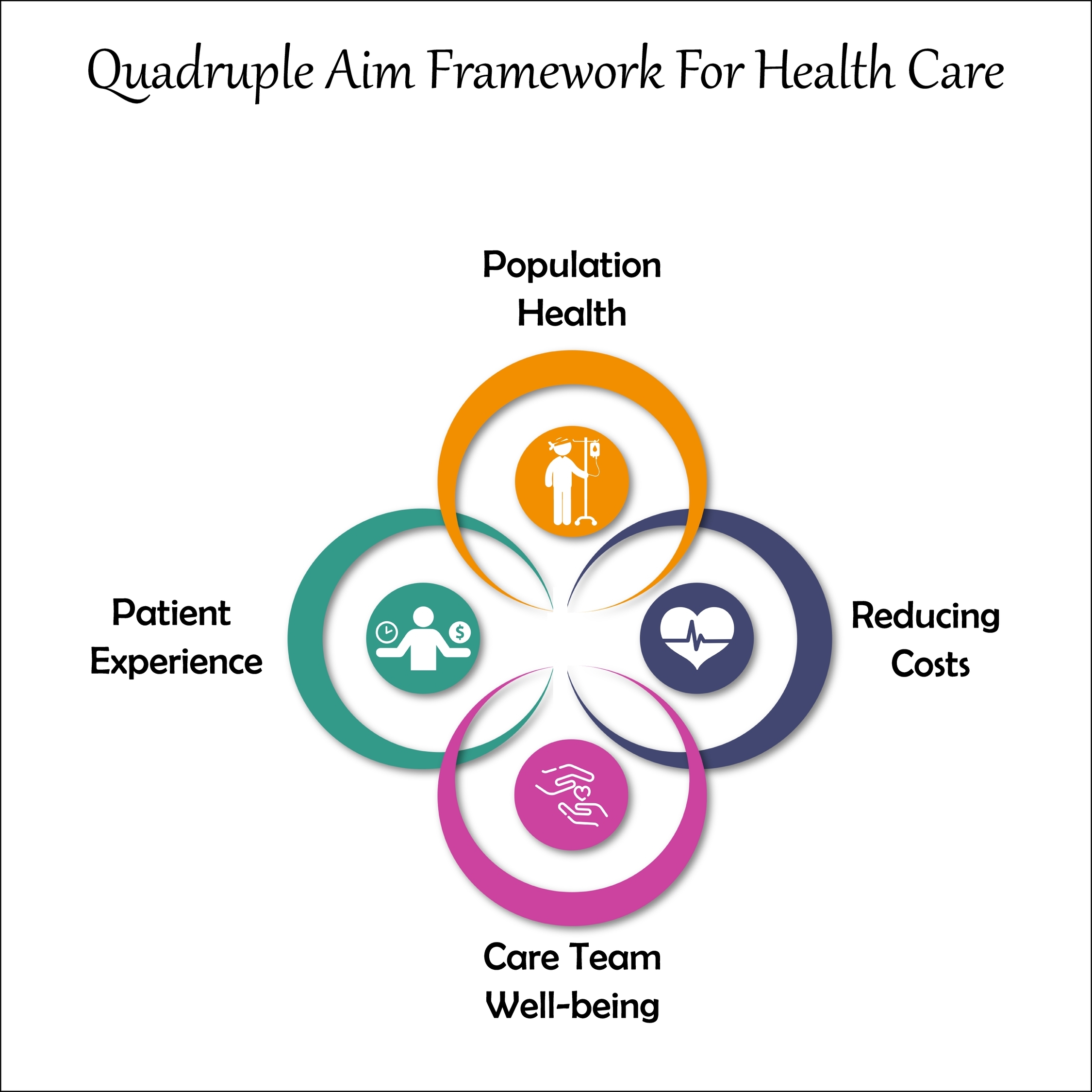Introduction: In the ever-evolving landscape of healthcare, a new paradigm is emerging—the Quadruple Aim. Building upon the Triple Aim, which focuses on improving patient experience, enhancing population health, and reducing costs, the Quadruple Aim adds a crucial fourth element: provider well-being. This comprehensive approach recognizes that healthcare providers play a vital role in delivering quality care and achieving positive patient outcomes. Let’s explore how the Quadruple Aim is revolutionizing the healthcare industry.
Patient Experience: At the core of the Quadruple Aim is the commitment to enhancing patient experience. By prioritizing patient satisfaction, personalized care, and effective communication, healthcare providers can create a nurturing environment that fosters trust and engagement. Patients who feel heard and supported are more likely to actively participate in their care, leading to improved outcomes and increased satisfaction.
Population Health: The Quadruple Aim expands beyond individual patient care and focuses on population health. By implementing preventive strategies, community outreach programs, and proactive interventions, healthcare organizations can address health challenges at a broader level. This holistic approach leads to healthier communities, reduced healthcare disparities, and improved overall population health.
Cost Reduction: With rising healthcare costs, cost reduction is a critical aspect of the Quadruple Aim. By identifying inefficiencies, streamlining processes, and embracing innovative technologies, healthcare organizations can achieve cost savings without compromising the quality of care. Additionally, preventive care and early intervention strategies can prevent costly hospitalizations and chronic disease complications.
Provider Well-being: The Quadruple Aim recognizes that provider well-being is essential for sustainable healthcare delivery. Burnout, high stress levels, and dissatisfaction among healthcare professionals can directly impact patient care. By promoting work-life balance, implementing support programs, and fostering a positive work environment, organizations can improve provider satisfaction, retention, and ultimately, patient outcomes.
Conclusion: The Quadruple Aim represents a transformative shift in healthcare, acknowledging the interconnectedness of patient experience, population health, cost reduction, and provider well-being. By embracing this comprehensive approach, healthcare organizations can create a system that delivers exceptional patient care, promotes healthier communities, achieves cost savings, and prioritizes the well-being of their providers. As we continue to navigate the evolving healthcare landscape, the Quadruple Aim serves as a guiding principle for organizations striving to achieve excellence and sustainability in healthcare delivery.
Employer Plan Sponsors that undergo the mindset shift and focus on the Quadruple Aim rather than the cost of health insurance are better equipped not only to improve the population health of their members, not to mention increase satisfaction among their employees, but also reduce their cost to provide high-quality healthcare to their members.

